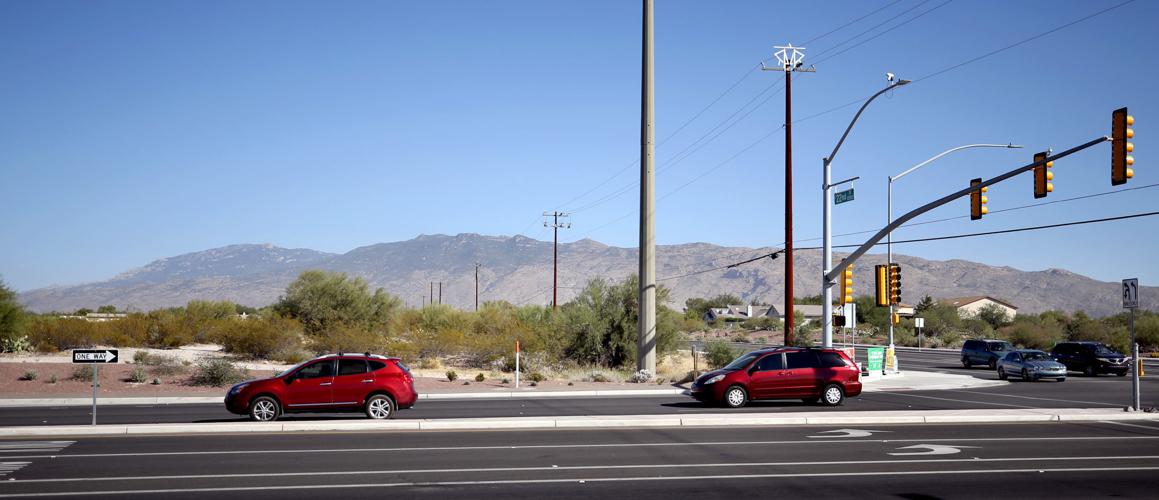Several neighborhood leaders on the city’s east side are opposing the construction of a new Fry’s grocery store that’s set to be considered by the Tucson City Council next month.
The “supercenter” store is proposed on a 16-acre site on the northeast corner of South Houghton Road and East 22nd Street.
Residents from several east-side neighborhoods have banded together to fight the store, asking the council to honor a promise it made more than three decades ago to protect the area on the doorstep to Saguaro National Park from major development.
Area residents, calling themselves Save Houghton East, turned in more than 1,000 signatures on a petition asking the city to follow the guidelines that are part of the Houghton East Neighborhood Plan.
Those guidelines include specifications for height and density, but also are specific on where commercial businesses should be located.
Neighbors said the plan — written and adopted when the city annexed the area in 1985 — is one of the most restrictive in the city and designed to protect plant life and wildlife in the area next to Saguaro National Park.
The request before the Council asks for a rezoning of the property from residential to commercial, with a few modifications. Those include increasing the number of gas pumps from 6 to 12 and allowing for some outdoor storage, explained Linda Morales, the CEO of The Planning Center. Morales represents 22nd Baptist Church, which owns the 16-acre property.
The grocery story falls just under the city’s big box classification, with proposed 99,918 square-foot anchor store, a gas station and plans for two other retail buildings. For comparison, the Target supercenter at 9615 E. Old Spanish Trail is about 144,300 square feet, and the Walmart supercenter at 2711 S. Houghton Road is about 92,900 square feet.
“Nobody is listening to us,” says Linda Schaub, who lives a few houses away from the proposed store and has been involved in opposing it for nearly three years. “There are multiple violations that we’ve pointed out to the zoning examiner, but he doesn’t think they are worthy.”
The development, for example, is using the city’s right of way and drainage ditches to meet open space requirements.
And, Schaub says, a zoning hearing isn’t the right time or place to reconcile the concerns of the neighborhood and what the developer wants to do.
“You cannot amend a neighborhood plan with a rezoning,” she said. “Pure and simple, an (a planned area development zone) must be in compliance with the neighborhood plan, and it is not.”
Other concerns include that the proposed Fry’s is too big to be a neighborhood store, and the city is using the wrong calculations that allow the Fry’s to avoid the “big-box” label and the specific zoning concessions that it would require.
Additionally, neighbors say, the store being located close to the eastern edge of the 16-acre property will be disruptive to nearby residents and no amount of well-placed lighting and thick walls would be enough to mitigate their concerns.
The developer is working close with the neighborhood to address various concerns, and has made concessions. That includes reducing the size of the store and banning certain types of businesses that could be loud late at night, said Morales, who is working with the seller.
In late April, the neighborhood was largely split on the store, with the city receiving 38 letters in favor of the grocery store and 28 letters of protest.
Last week, the city’s zoning examiner recommended that the council approve the rezoning of the property.
The decision was largely expected, as the zoning examiner has previously approved the project. A clerical error, however, forced the city to restart the public notification process.
The City Council is expected to review the rezoning next month, the last major step in a political process for the 16-acre site.
City building officials would still have to review site-specific plans, but those would largely be handled administratively.





